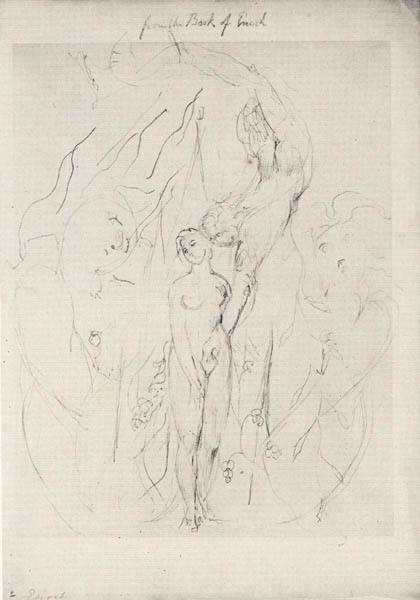Image Details

National Gallery of Art, Washington, D.C., Rosenwald Collection
“An Angel Teaching a Daughter of Man the Secrets of Sin,” by William Blake, c. 1824–1827. Though unfinished, Blake’s drawings for the Book of Enoch powerfully portray the superhuman and erotic elements of the prophet’s vision. A naked Watcher, or angel, descends from heaven and caresses a nude woman as he whispers in her ear. Although she looks away, she gently holds the Watcher’s arm. On either side of the couple is one of their giant offspring. Flames seem to envelop the giant on the left, perhaps Blake’s interpretation of divine punishment.
The Book of Enoch was published in a modern European language for the first time in 1821. The Reverend Professor (later Archbishop) Richard Laurence gave his English translation and history the all-inclusive title The Book of Enoch The Prophet: An Apocryphal Production, Supposed to Have Been Lost for Ages; But Discovered at the Close of the Last Century in Abyssinia; Now First Translated From an Ethiopic MS. in the Bodleian Library. Within a few years, five major poets and artists—Lord Byron, Thomas Moore, Richard Westall, William Blake and John Flaxman—were devoting a flurry of attention to the visionary and erotic work.
Highlighted in this article and in “When the Sons of God Cavorted with the Daughters of Men” and “Don’t Let Pseudepigrapha Scare You” are drawings by Blake, Westall and Flaxman.
